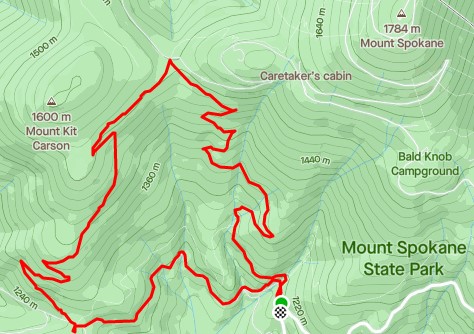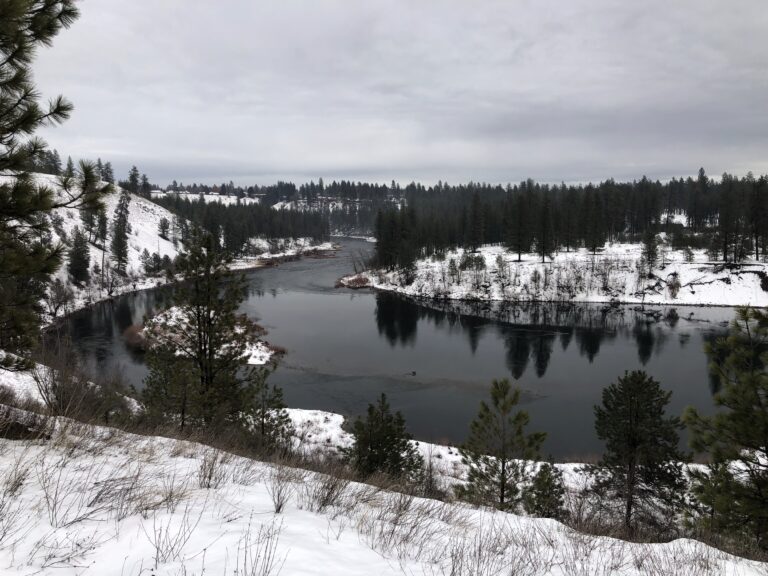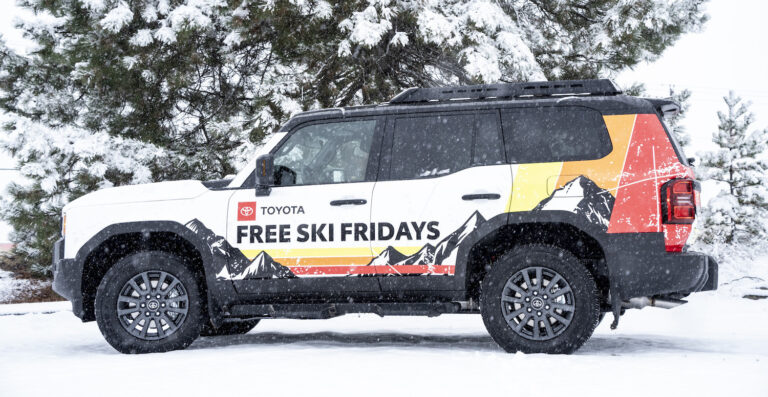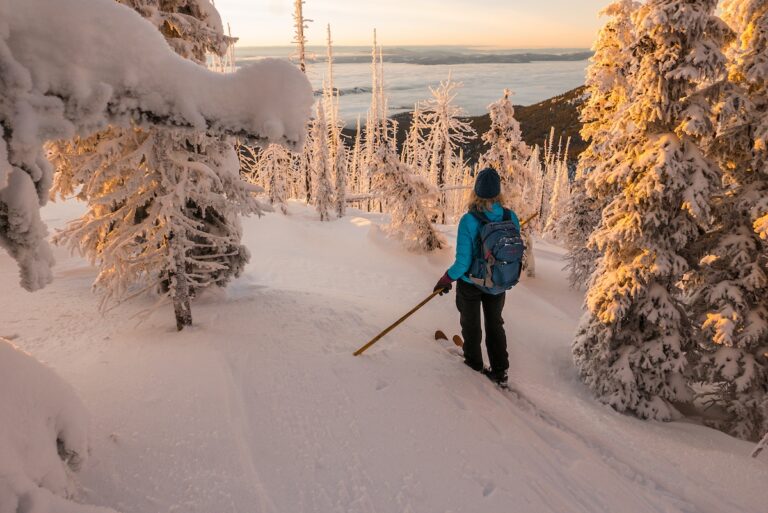Mount Spokane’s Trail 110/140 Loop
Those who frequent Washington State Parks are familiar with the way their trails follow a number system and any trail names are colloquial. However, follow this route with a GPS tracker, and you’ll clearly see the reason why I have begun to refer to this hike as the Christmas Tree Loop.
Just like any Christmas tree I’ve ever had, it’s slightly lopsided yet lovely. It’s the perfect hike for the transition from late fall into winter, as access is maintained year-round and the trail works well for both hiking and snowshoeing.
To explore this route, start at the Lower Mount Kit Carson Loop Road trailhead. Note that this parking lot requires a Discover Pass from April 1-Nov.30. It transitions to a SnoPark lot from Dec. 1-March 31, when a SnoPark permit is required instead of a Discover Pass. SnoPark permits go on sale beginning Nov. 1, and anyone intending to use Mount Spokane State Parks trails through the winter months must purchase this pass that helps defray the cost of snow removal in parking lots. Those who don’t snowshoe should try this hike during November before the SnoPark permit is required for parking here.
Hikers must immediately cross Mount Spokane State Park Drive from the parking area, so it is recommended to carry snowshoes across the road if the snow is deep enough to require their use. In early November the route is generally snow-free for its entirety, but by late November into December either microspikes or snowshoes are generally recommended for this trail.
Start by descending a short distance past the gate on the Lower Mount Kit Carson Loop Road. In approximately 200 feet, trail 110 makes a slight right uphill; turn here to begin the Christmas Tree Loop. After approximately 500 feet, the trail splits again. Turn left to continue on trail 110, immediately crossing Burping Brook on a footbridge.

There are additional trail intersections at the .1-mile and 0.4-mile mark, but continue on trail 110 by staying right at each of these as the trail begins to climb and makes a series of switchbacks up the mountain. The lower reaches of the trail pass beneath cedar and Douglas fir trees.
By the upper portion of the trail, the forest opens up and includes more subalpine fir along with western larch, some of which may still be showing a little fall color in early November. At the 1.1 mile mark the trail crosses another bridge over Burping Brook, completed in 2019 to help hikers navigate the tricky winter water crossing, and at 2.1 miles hikers reach the top of the “tree” at Saddle Junction.
Hikers need to take a hard left at this junction to begin the descent on trail 140. The upper portion of the forest on trail 140 is very similar to the climb, but as hikers continue down the trail it transitions onto a drier forest type that includes many lodgepole pine trees. At the 4.1 mile mark the trail exits at Smith Gap.
The snowshoe warming hut is located just across from the point where trail 140 exits. State Parks intends to re-open the warming hutsfor winter, which have been closed for the majority of 2020 due to COVID-19 concerns. Park visitors are asked to wear facemasks if making use of the warming huts and limit the amount of time spent inside.
When the weather is nice, there is also an alfresco picnic table located at Smith Gap, with several others along the trail back to the start.
To complete the Christmas Tree Loop, turn left at Smith Gap and hike downhill on the Mount Kit Carson Loop Road an additional 1.4 miles to return to the parking lot.
- Round-trip distance: 5.5 miles
- Rating: Moderate
- Elevation gain: 1150 feet
- Map: Free printable maps available at mountspokane.org
- Getting there: Take State Route 206 to Mount Spokane State Park. From the park entrance, continue approximately 2 miles to the hairpin turn parking lot at the Lower Mount Kit Carson Loop Road trailhead. Parking is on the right, and the trail begins to the left and across the road.
Holly Weiler is a hiker and trail runner who even tries to slog through the Christmas Tree on running snowshoes. Through her work with Washington Trails Association, she led some of the crews that built the bridges hikers will see on this route.













